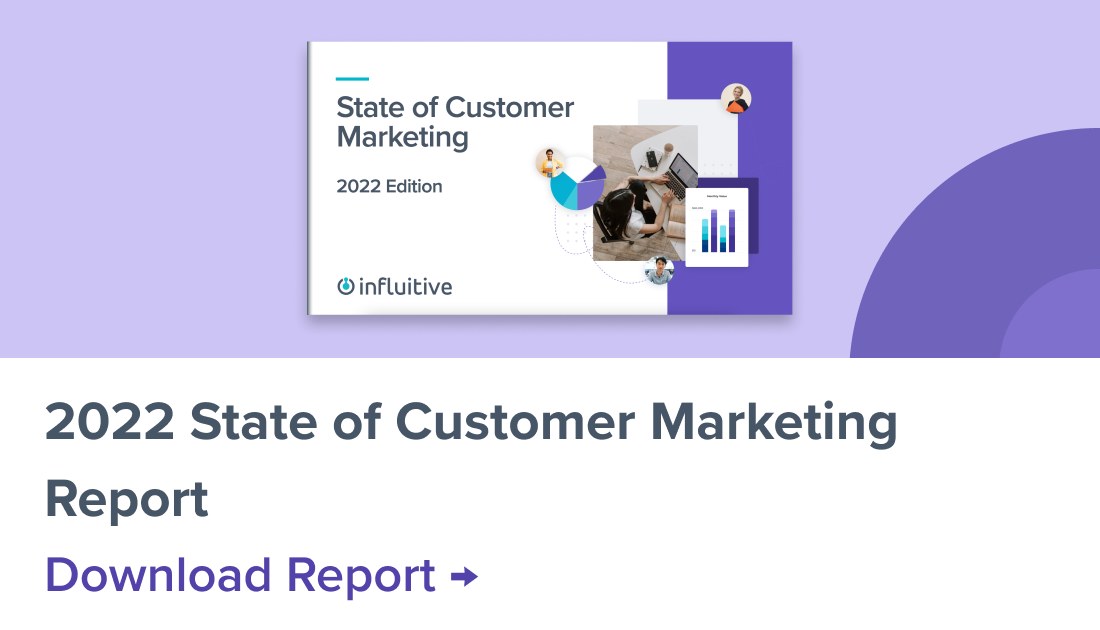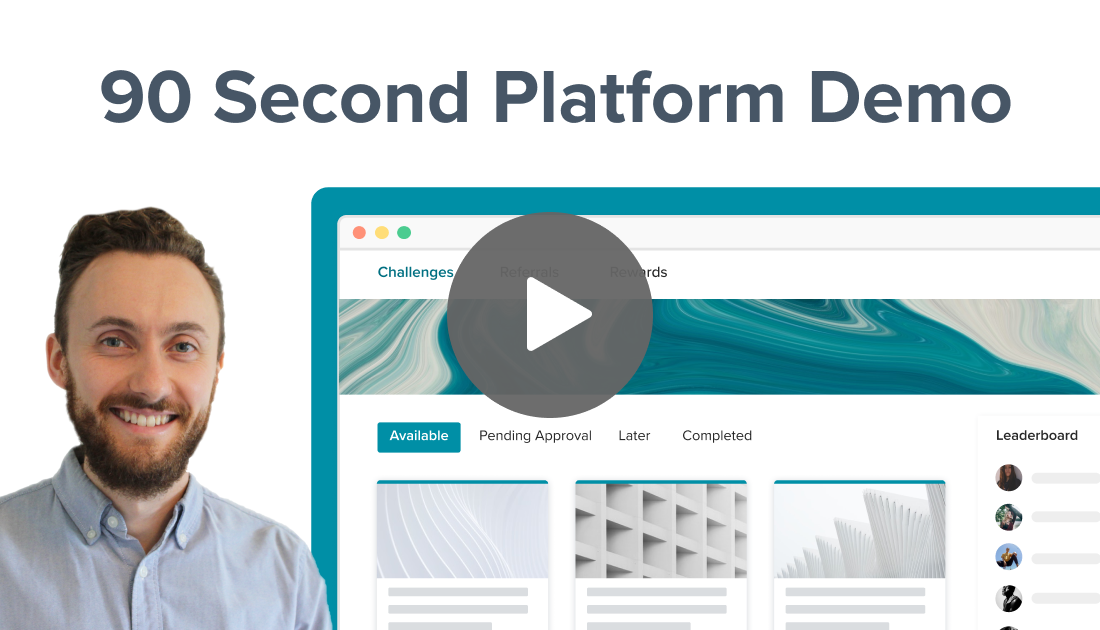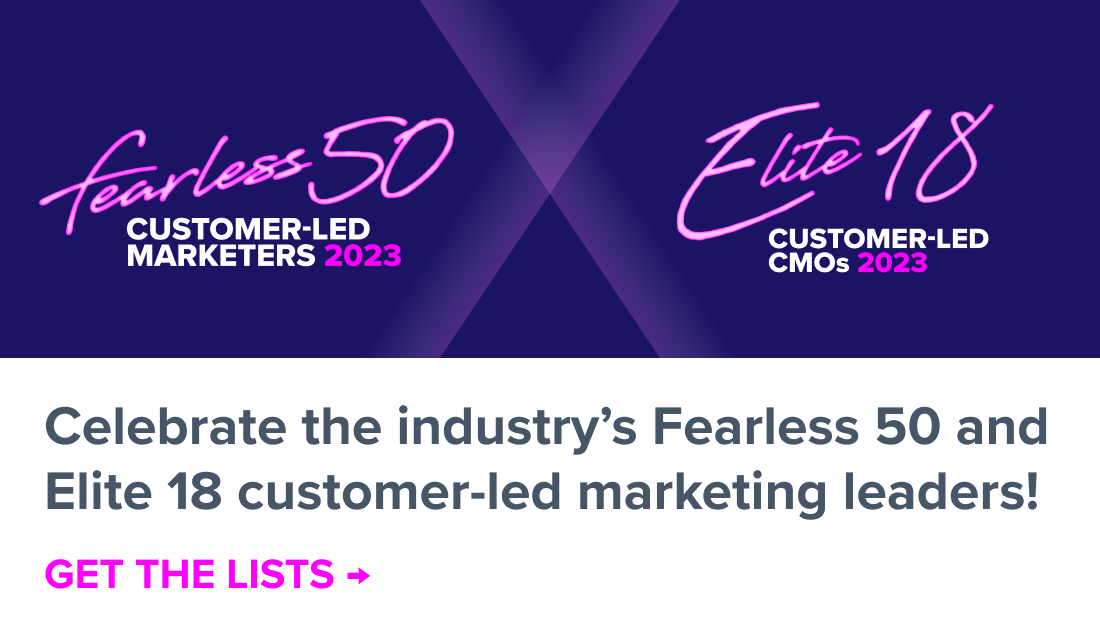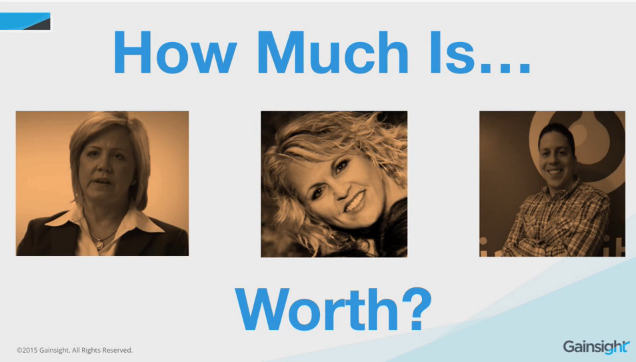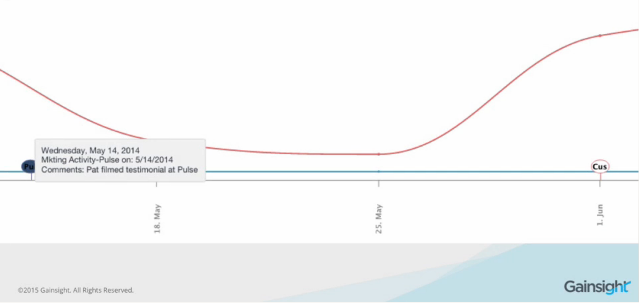If you’ve been determining customer lifetime value using traditional measures—like how much a customer spends with you—you’re doing it wrong. Nick Mehta, CEO of Gainsight, discusses why, and outlines how putting customer success and advocacy together can help you determine the true value of a customer in his Advocamp presentation. (Spoiler: it has nothing to do with total dollars spent.)
I have basically two things I’m going to talk to you about. The first one is something I’m super passionate about, given what my company does. I think when people think about the value of their customers, they know this term “lifetime value.” They’re doing it wrong. And we’ll talk more about that. But they’re thinking about the value of their customers and dramatically underestimating the value. The second thing I’m hoping I’ll leave you with at the end of this is some practical tips on how you can actually use your customer success efforts to drive advocacy, and how you can use advocacy to drive customer success. So those are the two things I hope you get out of this presentation today.
So let’s dive in and let me give you a little bit of background. Why am I here to talk to you about this? I run a company called Gainsight. We’ll talk more about it at the end. We work with lots of large and growing technology businesses, lots of small businesses as well. I’ve run a number of technology businesses in the past. I’ve always worked on customers and customer support, customer success, and saving customers and keeping them. I invest in a bunch of businesses, advice companies. And at Gainsight, we talk to lots of companies about their customer. So we have a lot of experience understanding customers.
One of the most fundamental things we talk about at Gainsight when we think about customers is this: How much is a customer worth to you? A lot of you work at vendors, so I’m going to make this a group thing. How much is a customer worth to you? Call out how much your customer is worth to you. Quantify it. Tell me your ASP, your LTV, whatever thing you want to say. How much are your customers worth to you? Influitive, how much is your customer worth? A hundred-thousand dollars? Good answer.
So, how much is your customer worth? If you Google this and try to understand what’s the value of a customer, you can Google lifetime value, and you get this crazy equation that has a weird “e” in the front of it. Basically, most of you know that people say the definition of a customer’s value is all of the money they’re going to pay your over time minus the cost—kind of discounted by the fact that money today is worth more than the money tomorrow, right? And that’s kind of the value of your customers. That’s all we think about, right?
So this customer is paying us a thousand dollars a year and they’re worth 1/100th of the customer that is paying us a hundred thousand dollars a year, right? Right? That sounds obvious. And you know, obviously, in this line of thinking, you start saying, ‘Great, my customers are all about the money.’ They pay me, so if I can actually go and have improved retention rates, I’m going to grow faster because I’m going to keep more of my revenue. If you’ve read our stuff, you know that companies that keep their customers longer grow faster, and that’s kind of a duh, like, obviously, right? And that’s pretty clear. And another thing that’s pretty obvious is that companies that keep their customers end up being worth more over time, because they basically end up being valued more by investors. So, this is all basic stuff. You measure your customers by what they pay you. If you actually keep them longer, you grow faster, and you’re worth more.
Is that the end of the story? I challenge you to say that’s actually the beginning of the story, and that we’re actually asking the wrong question as an industry. So I started out and said, ‘What’s a customer worth to all of you?’ My question is, is that the right question or should that question be something different? How much are the people you work with worth to you? And when you think about customer success, how much are the various advocates, users, sponsors, all the people you work with, worth to you?
Here are three stories on this slide.
Amanda Schmidt on the left was a customer of ours at Marketo. She went to Adobe, bought our stuff again. Anjanette Hill-Mendoza was a customer of one startup, came to a large company called Advent. Bought again. Chad Horenfeldt, who is in the room here somewhere, is with Influitive now and runs customer success, worked with us before. So if we just measure the value of our customers based on that value, that transaction, we would miss all the value of these human beings. And this is why you’re all here. So I’m preaching to the choir.
What I think a lot of businesses don’t understand is they look at every individual customer at the top level and they say how much were they spending with us, how much is that over time, and that’s all they’re worth. And what you end up concluding that small customers are worth way less than large customers. And I argue in a lot of small customers, you’ve got these amazing advocates that you build good relationships with. And those people go get you jobs at big companies, and they could be really, really important.
So, our contention I think this is shared with a lot of people in the room – is that companies are basically dramatically undervaluing their customers. And they’re undervaluing them because they’re not thinking about the references they do for them; they’re not thinking about the referrals. They do the informal referrals in the hallways. They’re not thinking about champions. This is something we think about a lot where your customers aren’t just buying stuff from you, they’re champions of getting value out of it. And how do you make them better champions over time? The customers you have are evangelist speaking at events like this, right? These people are giving you great feedback. And this is one of the things I think people often underestimate, is all the value of the feedback that you get even from those small customers.
Finally, and interestingly enough, some of these best users and advocates become your teammates over time. They actually work with you. They make your company better. If I did that LTV calculation, is any of this in there? None of it is in there, right? None of that stuff that’s actually a huge chunk of the value of your customers is in the lifetime value calculation. The lifetime value calculation is wrong. And what that means is, bottom line, sorry, that we’re all undervaluing our customers and our customer success programs.
Now, to figure things out in SaaS and to really understand them well, you don’t have to think anymore. You just have to go to the godfather of SaaS. Does anyone know who the godfather of SAS is? Mark Benioff. I guess he’s the big godfather. I’d say Jason Lemkin, who’s a great blogger, who blogs online at SaaSter. And Jason has this great blog post where he talks about the fact that the one way to think about this is we have first order revenue—the revenue we get from a customer by buying, staying and upgrading. And that’s how we measure lifetime value.
And then, second order of revenue is where you think about things like the word-of-mouth champions, evangelists, etc. And I challenge us to ask how do we measure not just that first order revenue but the second order revenue? And then, how do we use that to figure out that we need to invest a lot more in customer success and advocacy? And that’s the bottom line of this presentation: how do you get people thinking about that customer as not just the money they’re spending with you. And we’ll talk about kind of how we do that.
With this, I’ve got some tips on how do you actually take customer success and advocacy and link them together. Here, we go through five things that we hope you take away from this.
1. Measure CSM on advocacy
How many of you have customer success teams at your companies? Show of hands. If you don’t, you’ve got something like account managers, sales people, retention, whatever, right? So, those team members are all measured on that lifetime value calculation. They’re measured on renewals. They’re measured on retention. They’re measure on churn. They’re measured on upsell. Are they measured on advocacy? Are they measured on the number of reviews that your customer does? The number of app exchange reviews or G2 Crowd reviews or the number of references, referrals? Are they measured on any of that, or are they measured on the financial value?
If that CSM, or that account manager, is compensated not just to drive short-term or first store revenue, but also long-term second order revenue, you will drive more advocacy in your community. Step number one when you go back, is figure out how your company can actually put it in your core score card. Advocacy is not just a measure of the marketing team, but also the customer success team and the sales team overall. And actually, measure it not just at a CSM level, but actually the customer level. You know, most of you measure your customers in some way – might be a spreadsheet, might be something like Gainsight. How do you actually measure the value of that customer, not just in financial value, but in advocacy?
This is an example where you’re measuring not just how much they’re spending with you, or how much they’re using your product, but actually how many references that they’ve done, how many reviews, are they in your community, things like that. Push it down to the customer level. Measure the CSM on that and measure the sales team on that in addition to measuring marketing. So that’s step number one. I think it’s really actionable. I’d love to see every CSM and account management team have this in their MBOs in 2015.
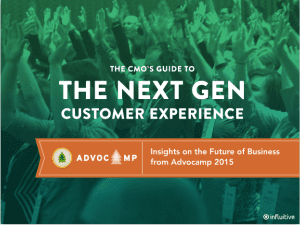 Get actionable insights & advice from 20 of the most innovative customer experience thought leaders and practitioners in the B2B world.
Get actionable insights & advice from 20 of the most innovative customer experience thought leaders and practitioners in the B2B world.
2.Get the real, human story from the CSMs
Your CSM team or your account management team are the eyes and ears for customer advocacy. And I think most of you know that a lot of the great advocates are going to come out of the customer success relationships; the onboarding that went really well; the great survey feedback; that great quarterly business review; the customer that came up with a creative use case on how to use your product. And how do you actually go and turn that into an advocate right away?
One of the things that’s interesting about this is how many of you enjoy reading customer case studies on websites? Many of you have written them, right? How many enjoy reading them? Most of them kind of suck. And the reason they suck is that they’re not real. I could write a program to auto-generate every case study, right? So-and-so company has this challenge, met the vendor, 3 million percent ROI. Customer success people, they know the real story. The real story is that this person was toiling away, kind of annoyed at their boss for not appreciating what they’re doing. They met the vendor. The vendor helped them understand the bigger picture of their job. They implemented this thing. It got them promoted. There’s a real story there, a human story.
CSMs have the human story. Get it from them. Leverage that story and actually operationalize it. Figure out how every positive touch point turns someone into an advocate. Every time you get a positive Net Promoter Score, or survey result, or your support case result, every time there’s a good QBR, every time a customer comes through onboarding, make it part of your playbook. This is an example like in our product of a playbook to track. How do you get that person into the advocate community right away? Because your customers aren’t always going to be happy. But when they are, make them advocates. So that’s number one. I think it’s a really high value thing you can do. Gainsight specifically operationalizes this. So every time somebody has a great event, we invite them to our Influitive community right away. Because that’s an important time to do it.
3. CSMs can help you find user advocates
Next thing to think about: many of us have relationships with advocates at senior levels. We have a CMO that loves our product or CCO or CSO, CEO, blah, blah, blah. And we all know that all the C people, the titles, that it’s really exciting, but the stories aren’t very deep. And you often miss a lot of the real relevance of day-to-day use of your product.
The CSMs can help you find user advocates, not just the executive advocates. The executives bought the product, but the users use them. How do you work with your CSM team to identify users that love what you do? One way to think about that is how do you use the CSM team to identify the people outside of your normal user as well? In this case, this is a real example from Gainsight, we were looking at our own system, looking at our usage, and saw this customer, one of our big kind of public SaaS company customers. Most of our users tend to be CSMs. We’re, like, oh great, CSM – this is usage over a period of time. CSM was using it. And then, there’s a sales rep in there. I’m, like, what’s that sales rep doing using Gainsight? We went and talked to this sales rep, and they’re like, I’ve driven hundreds of thousands of dollars of new pipeline for Gainsight. And we never talked to them first. That’s a new advocate for us. So how do you use this CSM team to find not just the executives but the actual users on the ground using your system?
4. Track and follow your advocates to maintain the relationship
When you look at your advocates, how do you use the CSM team and the advocacy team together, to partner to follow those advocates wherever they go? Sounds a little bit stalker-ish, but how do you follow them no matter when they go, whether they get promoted, they move into a new job internally, they go to a new company?
Let’s talk about the audience here. What should we do when our advocate goes to a new company? What should we do?
Stalk them! That’s great. Any specific stalking activities you want to suggest? What do you want to do?
Bottle of champagne! Congratulations on the new job! What else?
Maybe help them with one of the challenges in their job. If they’re a new manager, help them find people. Don’t try to sell them right away. Don’t try to get them to buy the new product. They’re going to buy them eventually if they’d like to, right? How do you build that relationship?
You know, at Gainsight, obviously, our advocates are super important. So, that woman, Anjanette, she’s at Advent. If she ever goes somewhere else down the road, we’re going to track where she is and continue to work with her. And it’s really important to us to track those relationships. So that’s number four: as a CSM team, working with the customer advocacy team, track your advocates wherever they go.
5. Leverage your advocates to make them more successful
Last thing, and this is actually probably the most counterintuitive. Everyone in the world knows that successful customers can become advocates. What a lot of people don’t realize is advocates become more successful customers. Now, they can’t hate you to start with. That doesn’t work. But if they reasonably like you, they’ll like you even more. What happens is, you go speak on behalf of a vendor, or you’re a reference, or you’re a case study. I’m speaking at this event, and you go back in and you’re like “I want to do more.”
I’m going to go back to my team tonight – they’re going to hate it – and I’m going to say “We need to do more with Influitive.” We need to do this, this, this, and this. I’m going to send them this really long e-mail about how Hootsuite is doing these amazing things with Influitive. And so, how do you actually make sure that you leverage your advocates to make them more successful? This is an example of a customer that came to one of our events, and this is their usage week over week. After they spoke at the event, it spiked up.
To wrap things up, and boil it all together, we need to, as an industry, move from looking at just the short-term metrics on financial value. And if you remember nothing else, customer success team members and customer marketing team members can be best friends. I think there’s a really great relationship forming. Feel free to follow me on Twitter.
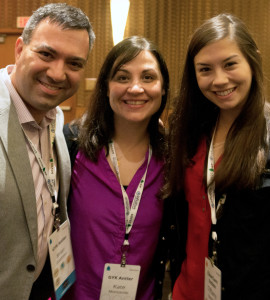 Join The Conversation In Our VIP Community!
Join The Conversation In Our VIP Community!
Watch all of the 2015 Advocamp presentations from prestigious speakers like Nir Eyal (author of Hooked), Rob Meinhardt (founder of Dell Kace), and Nick Mehta (CEO of Gainsight) in our VIP Community. You’ll also get to network with other advocate marketers and share ideas for growing your brand.








